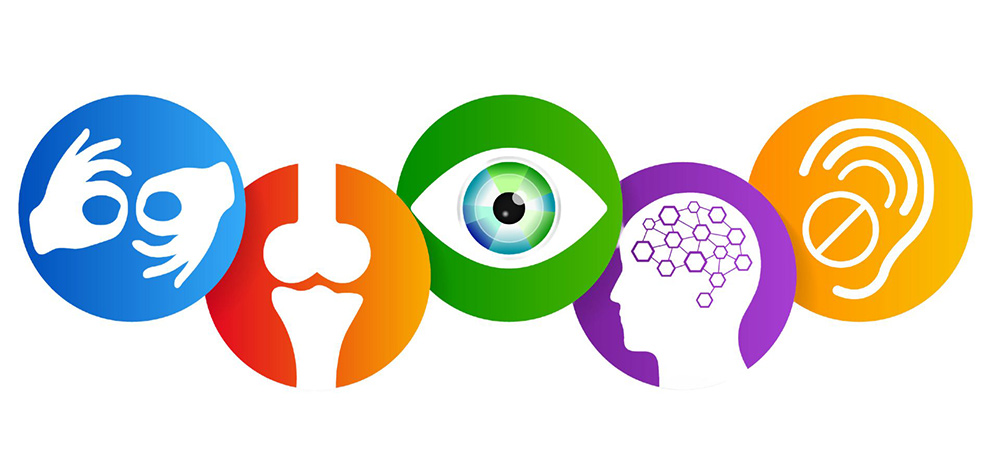Speaker on
Invisible Disabilities
and Chronic Illness
Trish Robichaud is a woman on a mission inspired by her struggles with invisible disabilities in the workplace. After overcoming these challenges and becoming an invisible disabilities speaker, she created a unique business model and has been spreading awareness of invisible disabilities worldwide ever since.
Founder of Changing Paces, an organization designed to help companies create diverse and inclusive workplaces through motivational speaking, education, consulting, and expert training development services. Changing Paces provides AODA accessibility training in Ontario to organizations across the province and accessible customer service across the globe.
Trish Robichaud is a reputed invisible disabilities speaker and has provided coaching, counseling, and advocacy support to people with disabilities for over 25 years and training, speaking, and consulting with organizations on disability issues for over 15 years.
She not only worked most of her life with multiple, chronic illnesses but became a multiple award-winning Motivational Speaker, Work-Life Inclusion Coach, and Accessibility Compliance Expert in spite of them.
As an invisible illness speaker and a Motivational Speaker on Invisible Disabilities and Chronic Illness, she speaks to businesses, HR audiences, lawyers, and other professionals. Her message is consistent and strong: “It’s just good business to support employees with invisible disabilities in the workplace”. Helping employers level the playing field for employees with hidden disabilities is always a win-win-win.
Topics Trish speaks on include:
-
- Invisible Disability in the Workplace
- Disclosure Planning
- Hope Heartbreak & Triumph with Mental Illness
- Levelling the Field for Employees with Invisible Disabilities
- Tearing Down Attitudinal Barriers
Over the years, Trish has written three books: the ABCs of Living Well with Chronic Illness, After the Diagnosis – The Journey Beyond and IN OUR SHOES: Practical Strategies for Disability Inclusion. These books offer insight and support while guiding you through either managing yourself or a situation with an employee with a disability. Her books are available for download and in print format, so everyone can access them, regardless of their situation.
Disability Can be Visible or Invisible
Everyone either has a disability or will have a disability later in life, even if it’s temporary. Many people don’t realize that disability can be both visible and invisible. Some disabilities are obvious to the eye, such as when a person is using a wheelchair. Others, such as when someone has autism or dyslexia, won’t be obvious. It’s important to know that while some disabilities are invisible, they’re just as hard to live with as those that are visible. An invisible disability speaker helps in creating awareness about hidden disabilities and how one can overcome them.

Invisible Disability in the Workplace
Trish Robichaud is a well-known hidden disability speaker and her mission to challenge assumptions about disabilities that are not immediately visible has been spreading awareness of invisible disabilities worldwide. “I have an invisible disability,” she began, “It’s called multiple sclerosis (MS). MS causes chronic neuropathic pain and mobility restrictions that often go unnoticed by others—but this doesn’t mean they aren’t real!”
Besides pain management issues, she has diabetes, heart disease, and bipolar disorder.
She also suffers from extreme fatigue caused by the MS. “Many people don’t
understand how serious these issues can be because they aren’t visible on the outside.” So,
as an invisible condition speaker, she strives daily to educate people about what it means for someone to live with an invisible illness or disability.
“Plan ahead of time and talk with trusted friends, family members, coworkers, and medical professionals before you decide to disclose at work.”
Let’s say you disclose your invisible disability. How do people react? Will they be supportive
and understanding, or will they question your abilities and make assumptions about your health?
You may not know how others will react until you tell them, but there are some things you can do to plan. You can prepare by talking with trusted friends, family members, coworkers, and medical professionals before deciding what to tell others about your condition. Furthermore, you can also think through what information is “need-to-know” for each person in your life, so you don’t overwhelm anyone with unnecessary information.
How do I tell my boss? What should I say at work if someone asks me, “What’s wrong with you?” How should I deal with coworkers who poke fun at me because of my illness? These are just some of the questions that may come up when people disclose their invisible disability at work or school — and it’s okay if these topics make you feel nervous!
BOOK A COMPLIMENTARY CONSULTATION
Book some time with Trish to talk about your event:
GET STARTED
Book Your
FREE 30-minute
Consultation

DOWNLOAD
QUICK TIPS SHEET
Accessible
Customer Service
Pros & Cons of Disclosing an Invisible Disability
There are some pros and cons to disclosing your invisible disability.
The first pro is that you have a chance to explain how you are affected by your disability. It allows you to educate others about what living with an invisible disability means, which can help them better understand you and create empathy for your situation.
Another pro, or benefit of disclosing is that it allows others to learn from your experience, especially if they have never experienced anything like it. It’s essential for people who live with disabilities (visible or not) to share their stories with others so that they know that they aren’t alone in their struggles!
Disclosure can also be an excellent way for you to connect with others who have similar invisible disabilities. It’s essential to find support from others who understand what it’s like, especially if they have the same physical limitations that you do.
“An estimated 1 in 5 employees has a disability but that number escalates to 1 in 2 when we count invisible illness and disabilities such as diabetes, depression, or chronic pain – yet employers are often unprepared to accommodate them.”
Imagine you’re at work and feeling under the weather. So you ask permission to go home sick, but your boss tells you that’s not an option—even if it’s for a legitimate reason.
It is happening to many people across the country. An estimated 1 in 5 employees has an invisible disability such as diabetes, depression, or chronic pain – yet employers are often unprepared to accommodate them. As a result, people with hidden disabilities face discrimination when trying to get their jobs done or even just going about their daily lives at the office.
Invisible disabilities are conditions that people don’t see but have a significant impact on their quality of life. Some people need one or two accommodations or adjustments to their job or environment; others need none.
While fatigue may be an issue for someone, we suggest strategies for managing and mitigating their fatigue instead of assuming they can’t do the job. Here are some examples of adjustments or accommodations:
-
- Coming in an hour late and staying an extra hour to compensate
- Setting the temperature in their office to suit their condition
- Making sure they have premium lighting in their office.
“Managing invisible disability in the workplace has become a vital skill for all organizations, especially those that value Diversity, Employment Equity, and Inclusion”.
As the CEO of an organization that strives to create inclusive workplaces, you may be familiar with the challenges faced by those living with a disability. It’s well-known that people with disabilities are under-represented in the workforce. Yet, many organizations struggle to attract and retain employees who have visible or invisible disabilities.
Making this issue even more difficult is that many people with invisible disabilities don’t know how to manage their own conditions within their work environment. It can lead to feelings of isolation and self-judgement, which can hurt mental health and productivity at work.
This is one of the ways Trish can help you. She’s created a unique business model that helps organizations create a more inclusive and accessible workplace for employees of all abilities.
Come to Ontario’s top AODA accessibility training and disability awareness firm – and learn how disability inclusion is an OPPORTUNITY and not an obstacle.
In addition to training courses, Changing Paces offers custom workshops on topics including:
-
- Understanding how we perceive diversity
- Creating an inclusive environment
- Addressing unconscious bias
- Supporting employees with chronic illnesses who are transitioning back to work.
For all of us to be successful and happy at work, employers need to make accommodations for workers with invisible disabilities. It is by providing reasonable adjustments and support that employees with hidden disabilities will feel free to bring their whole selves to work, optimizing their potential.
Do Invisible Disabilities Affect Mental Health?
Invisible disabilities are often overlooked, misunderstood, and under diagnosed. They include chronic illnesses like fibromyalgia and Lyme disease, as well as mental health conditions like depression and anxiety.
These disabilities can significantly impact the mental health of the person living with them. For example, someone with fibromyalgia could be struggling with pain daily, making it hard to focus on anything else. It’s also common for people with invisible disabilities to be judged or misunderstood by others, which can affect their self-esteem and sense of belonging in the world.
Please remember that people with invisible disabilities aren’t faking or exaggerating — they’re often just trying to get through each day like everyone else!
People with depression or anxiety may not exhibit any outward signs of not being well, even if they are experiencing incapacitating symptoms internally. When a person has mental health issues, it’s essential for them to take care of themselves in the same way as they would if they had physical health issues. Mental illness affects nearly half of us at some point in our lives.
We’re sure that Trish would bring welcome energy and passion to your conference, meeting, training program or project! If you’re not sure yet, be sure to read more about, and listen to Trish on her Motivational Speaking page.
BOOK A COMPLIMENTARY CONSULTATION
Book some time with Trish to talk about your event:
